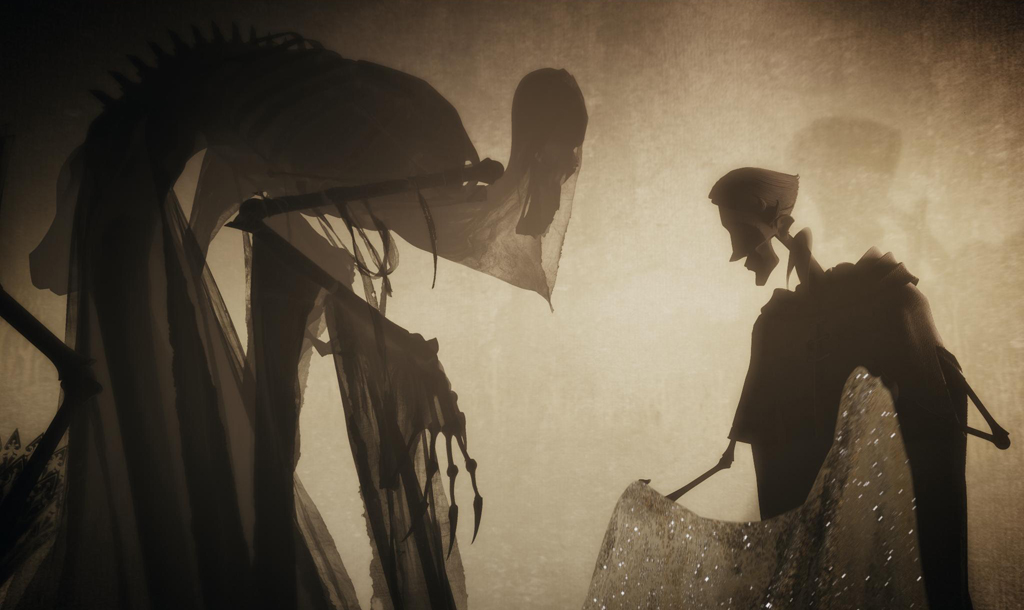For the short screenplay I’m developing, I am drawn towards exploring modes of visual storytelling when it comes to creating an animated short film. We’ve discussed in workshops how screenplays for animated films may be governed by different rules and concerns. Things like a longer production process, character designs not being completed, the need for having the screenplay ready before the final look of the animation is finalised. As in the screenplay for Toy Story, Andy is described simply as a 6-year-old boy:
![]()
The character descriptions are not detailed as they might be in a screenplay for a different type of feature film.
I also think that an animation provides a different type of screenwriting challenge compared to writing a screenplay for a live-action film. An animation is not bound to the restrictions of reality or logistics – the setting could be anything, the characters could be anything, any size, have any amount of legs or whatever.
I’ve been inspired by the animated sequences in Harry Potter and the Deathly Hallows and A Monster Calls. For one, the sequences are really beautifully animated and explore visual storytelling in a unique way.

Deathly Hallows animation. Source.

Storyboards for A Monster Calls. Source.
In terms of story, I am thinking of adapting a Grimm brothers fairytale – they are interesting to me because they are often quite dark in nature, and have sort of poeticism to them, like the sequences in Deathly Hallows and A Monster Calls. I’ve chosen a story called Old Sultan which can be found here.
There are a few existing adaptations of this story. One of these I’ve linked below: it’s also an animation, which couldn’t possibly be more reliant on dialogue to deliver the story.
This animation really pushed the characterisation of the animals, especially that of the three legged cat, to make the story more light hearted and appealing to children. It also changes the ‘sabre’ from the original tale into a rifle. Which brings to the attention an important point of the construction of the visual storytelling – the farmer is shown polishing his rifle in the beginning of the film so it seems logical that the dog would get his hands on one.
Another retelling of the story is here:
This version is even more simplified and targeted to children.
Both these versions are quite lighthearted adaptations of the original story. The moral of the tale is made quite clear in both of them, actually voiced by the narrator in the latter instance: “loyalty pays off”, “Sometimes for friendships to last, friends shouldn’t take each other too seriously”.
I want to explore idea of “transformation is essential” (as advocated by Blake Snyder (2007) ) but focus on change in character of the dog. First he is morally righteous, but he has to compromise this to survive. He loses his friend the wolf, as the price of this. Now he is alive, but morally changed. The wolf, just wanting to help a friend in need, gains nothing, and is banished. Thus I’ll bring back the ambiguity of the original fairytale, and target the screenplay for an older audience.
I attempted to start writing a bit of the screenplay to see if I could set the tone.

But I encountered a problem I hadn’t considered: would I use dialogue or narration, or both? The sequences that inspired me used narration almost exclusively, but the adaptations I found in my research used a mix of both. I think that the best way to explore audio-visual storytelling would be to use both to a minimal extent, but focus on trying to create meaning and exposition through audio-visual ways as much as I can, like through colour, shape, sound, or action.
My next few steps in the development of this project will be to create detailed outline, and rough storyboards. I think the storyboards will be especially helpful in getting me to think more about how I can visually show the story – especially important because it is an animation – and then it will be easier to draft the screenplay from there.
References:
Grimm’s Fairytale classics Old Sutan, Youtube: https://www.youtube.com/watch?v=ucX0sb97baU.
Making of A Monster Calls, Vimeo: https://vimeo.com/204207639.
Old Sultan cartoon for kids, Youtube: link.
Toy Story, 1995, Joss Whedon.
FXGuide, Deathly Hallows Animation, https://www.fxguide.com/featured/framestore_deathly_hallows_animation/
Snyder, B. (2007). Save the cat! goes to the movies : The screenwriter’s guide to every story ever told / [eReserve]. Studio City, CA: Michael Wiese Productions. pp. xi-xxi